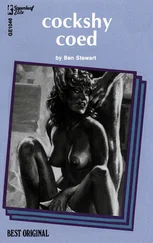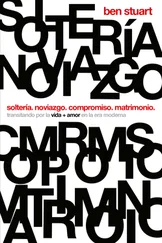The Moor’s Origins
The earliest record we have of the black detective Jackson Hieronymus Burke — the Moor — is an advertisement he ran in several Berlin newspapers in 1873, promising discretion and modest fees. Nothing is known of his cases from this period, but, tracing the address given in the advertisement to one of the city’s poorer quarters (Prenzlauer Berg), we believe they would have been limited to the lowest kind of work: finding stolen dogs, tracking suspected adulterers. After the advertisement, Burke drops from history until the fall of 1876, when he leaps onto the scene with a single feat of deduction.
All of Berlin had been baffled by the disappearance of the renowned theater critic Wolfgang Metzger. The police searched the sewers, dug up his mistresses’ back gardens. They questioned actors whose abilities he had maligned, impresarios whose shows he had damned. Neither the body nor evidence of foul play was found. Then, two weeks later, a letter appeared in the newspaper: Metzger had not disappeared, but had murdered his twin, a wealthy hay merchant, and replaced him. The letter, signed by Burke, described how he had uncovered the truth when he visited the twin’s villa to offer his services. He’d been directed to the stables and, finding the man there, noticed the horses shying from his touch. “With that I understood all,” he added with the confident flourish he would keep for the rest of his career. The twin’s servants might not have recognized a difference between Metzger and his brother, nor the twin’s wife, but the horses, with their keen animal sense, had betrayed the critic, who had hoped, by impersonating his brother, to avoid his debtors.
The city was shocked by this revelation and amazed by its deliverer. Everyone had the same question on their lips: who was this man, and where had he come from? Even now we can only speculate. Burke never spoke of his past, nor of how he came to detection. One rumor holds that he was born a slave on a Texas sugar plantation in the early 1840s, another that he was the son of a New Orleans freedman. References in certain archives suggest that a black detective — called, simply, El Negrito — practiced in Havana during the Civil War, but no proof connects him to Burke. We only know that Burke was American, that he was in his thirties when he arrived in Berlin, and that at the start of his career — in which he would solve over seven hundred cases and be memorialized in dozens of dime novels — he already possessed powers to rival the French masters Vidocq and Devergie.
Soon Burke’s photograph began appearing in shops, alongside etchings of the stable scene and a pamphlet, by a hack named Frisch, promising to teach its readers the detective’s secrets. He was invited to dinners, asked to salons — it was now, in the flush of his first triumph, that a columnist for the Zeitung, remarking on Burke’s color, gave him his nickname by declaring him their Othello, their Moor.
His Appearance
One must be wary of the newspaper and dime-novel illustrations, which often colored him darker than he was, thickened his lips, bulged his eyes. He was of middle height — five feet seven inches tall — and possessed a slight paunch, a rather large brow, and a strong nose with a rounded tip. His eyes were hazel, his skin a deep chestnut, his mouth often shaped into a slight smile that, as the kaiser famously remarked, simply said, “I know.” He never cultivated a mustache, kept his hair cropped close.
As for his dress, he wore English-cut suits of either gray or black wool, his sole ornaments three watch fobs hung from a golden chain. The fobs never changed, and any schoolchild in Wilhelm I’s Berlin could name them: the gold ship’s wheel to commemorate the Rhine Barge Mystery, the miniature shield presented to him by the Munich police in honor of his role in solving the Dubbel Murders, and the platinum-mounted bear claw given to him by the Prince von Schlieffen after he rescued Christiana, the prince’s intended, from her gypsy kidnappers. He wore them at all times — whether he was pursuing a clue in the sewers or lecturing the Reichstag on the criminal mind — perhaps as a warning of his constancy to those who would oppose him.
His Rooms, Part 1
Not long after the Case of the Murdered Twin — when he began receiving regular commissions and collecting handsome fees — Burke moved from Prenzlauer Berg to Fasanenstrasse, on the far side of the Tiergarten. He occupied the entire fourth floor of his building. Rooms upon rooms circled the courtyard, and over the years he fitted them out to his exacting specifications. There were the main living quarters, of course, and the famous sitting room where he met his clients while reclining on his settee — to heighten the flow of blood to his brain, it was said. Then there were the rooms for his collections: one for the ordered cartons of lint and hair from the chief criminals of the Continent and Britain; one filled with jars of soils from around the world, which he employed in the identification of dirts found at crime scenes; and one for weapons of every description: blackjacks and saps, trays of bullets and blades, a kris from the Dutch East Indies, even an atlatl from the polar regions. The chief of these rooms was the library. There he made his experiments, and there he kept his famous blue-morocco volumes — a vast collection of books and pamphlets, ranging from studies of African beetle carapaces to treatises on the patterns of broken glass, used in the study of clues.
His Mounting Fame
With each new case (the Mystery of the Blue Hussar, the Theft of the Archbishop of Mainz’s Diamond Miter), his fame swiftly grew. German bakers began producing the Moor’s Torte, a coffee-flavored pastry studded with “clues” (sultanas), and Moor Clubs spread across the Continent and in England — members blackened their faces and were given the details of a crime that must be solved by the end of the afternoon. Soon Burke was maintaining correspondence with other men of note (Kalb Ali Khan the philosopher-nawab of Rampur, Lord Roscomb the industrialist, Oscar Agardh the Swedish Darwin), and in 1884 he was summoned to Japan by Emperor Mutsuhito to solve the Golden Crane Murders plaguing the imperial family.
By 1881 one could open the newspaper on any given day, anywhere on the Continent and even in the United States, and read about Burke — that he had recovered a stolen painting for the State Museum or hunted the vitriol thrower Kurtz, that he had been seen having champagne with an actress at Dressel’s or sitting in Prince von Ysenburg’s box at the opera, or that he had received some new recognition from the kaiser or beaten the Prince of Wales at billiards. One famous article recorded the foods Burke ate in order to discover which aided his thinking (plums and kidneys, the reporter decided), while a number of others provided phrenological analyses of his skull, citing the enlarged organs of Comparison and Human Nature as the seat of his mental prowess.
His Nemesis
In the course of his career, Burke battled many adversaries: the confidence man Reynolds, the assassin Fiori, the archspy Countess von Perlitz. But greatest and most dangerous of all was the shadowy crime broker Heinrich Bloch.
In the fall of 1886, six-year-old Liesl von Eberbach, the daughter of the interior minister, was stolen from her home. Within a day letters began arriving at the papers bearing blood-spotted scraps of her dress. The letters asked no ransom, made no demands, but warned the girl would be killed in a week’s time. None could understand the kidnappers’ motive, nor find the faintest trace of their whereabouts — the letters bore postmarks from around the empire. Liesl’s father called in Burke to investigate, and with only a water stain and a sample of dust he determined she was being held in the aquarium by two henchmen in the pay of Henri Guillard, the French ambassador’s attaché. Liesl was rescued, the city relieved, the interior minister supremely grateful.
Читать дальше











